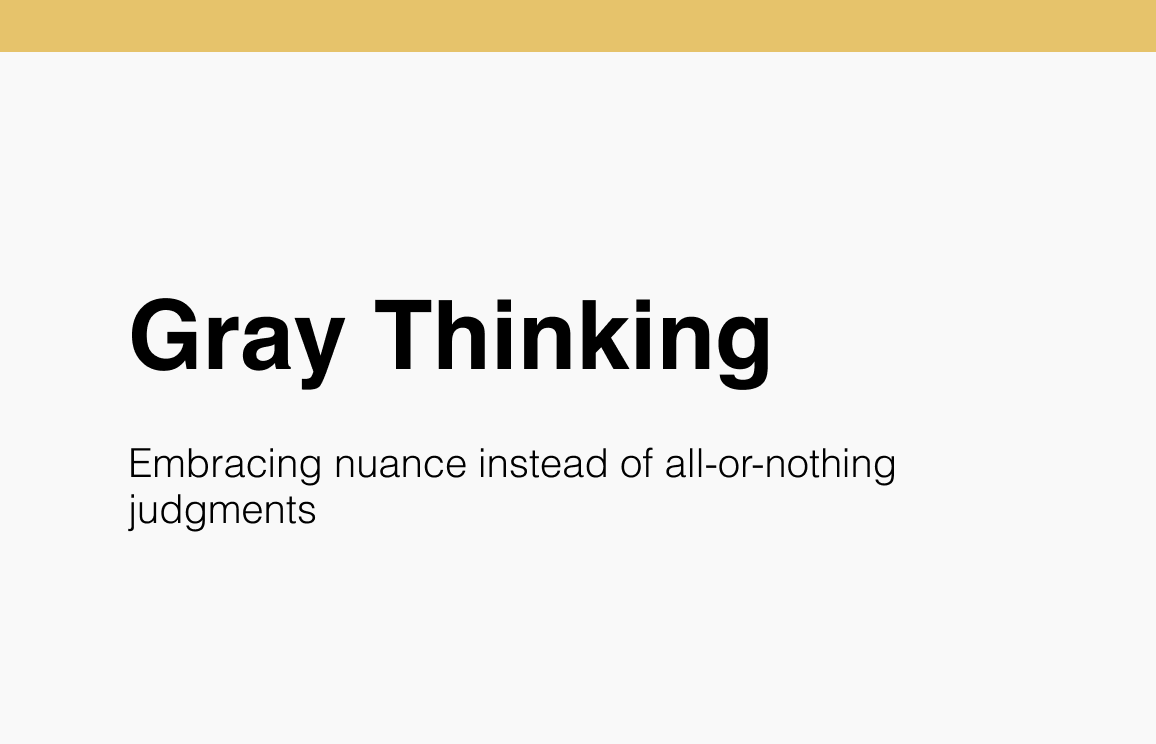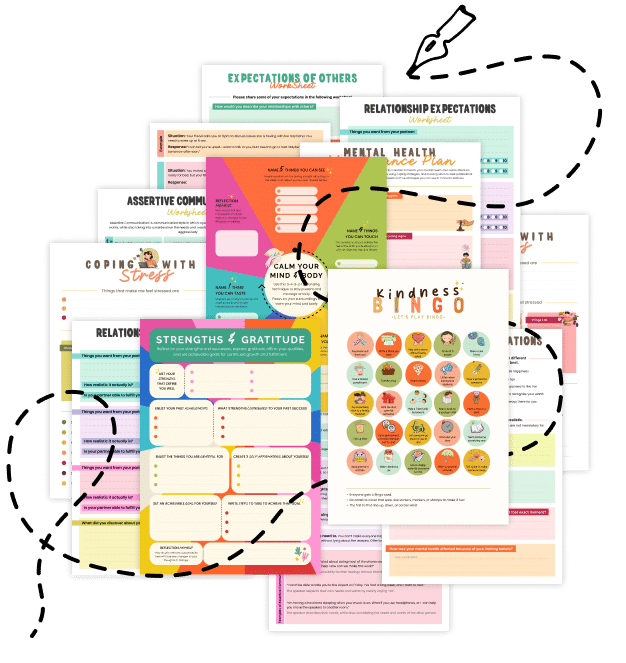20 Things You Should Know About Gray Thinking
Embrace nuance and complexity in your everyday life with these 20 insights on Gray Thinking—what it is, why it matters, and how it can help you navigate a complicated world more effectively.
1. What Is Gray Thinking?
Gray Thinking is the ability to see beyond black-and-white, all-or-nothing perspectives. It acknowledges that most issues, decisions, and situations are multifaceted and can’t be neatly categorized as “right” or “wrong.”
2. Origins of the “Gray Thinking” Term
While not always called “Gray Thinking,” philosophers and psychologists have long argued for more nuanced approaches to reasoning. It’s a modern catch-all phrase for this open-minded, flexible thought process.
3. Counter to Binary Thinking
Binary or “black-and-white” thinking focuses on extremes—something is either one way or entirely another. Gray Thinking, on the other hand, explores the full spectrum of possibilities in between.
4. Role in Problem-Solving
It widens your perspective when tackling complex challenges. Instead of jumping to a quick solution, you’re more likely to consider multiple angles, trade-offs, and potential outcomes.
5. Fosters Empathy
Acknowledging the nuance in people’s beliefs and experiences encourages empathy. Gray Thinking helps you see that individuals’ choices often have layered motivations, not just a single “good” or “bad” reason.
6. Reduces Conflict
By seeing the gray area in disagreements, you can defuse tension. If you’re not locked into a rigid stance, there’s room for compromise and collaborative solutions.
7. Encourages Continuous Learning
When you’re open to the possibility that your current viewpoint might not be the entire story, you remain curious. Gray Thinking supports lifelong learning and adaptability.
8. Linked to Emotional Intelligence
Recognizing that emotions can be complex and overlapping is a big part of Gray Thinking. It aligns well with emotional intelligence by allowing you to navigate nuanced emotional states—both yours and others’.
9. Risk of Overthinking
Though it is beneficial, it can sometimes lead to indecision if you endlessly weigh every possibility. Finding balance is key: be thorough, but set reasonable limits on deliberation.
10. Cultural Impact
Different cultures have varying comfort levels with uncertainty and nuance. Some emphasize tradition or absolute rules, while others encourage debate and multiple viewpoints—fueling more Gray Thinking.
11. Brain’s Role
Neurologically, it may involve more robust communication between regions responsible for emotional regulation, executive function, and sensory integration. This interplay supports flexible, multifaceted thought.
12. Helps in Leadership
Leaders who practice Gray Thinking can better manage diverse teams and complex projects. By considering multiple perspectives, they’re more likely to arrive at balanced decisions that respect various stakeholders.
13. Gray Thinking vs. Indecision
Gray Thinking doesn’t mean you never make a choice. Rather, it means acknowledging complexities first and then making an informed decision that accounts for multiple angles.
14. Connection to Creativity
When you see issues from multiple vantage points, your creativity flourishes. You might combine two seemingly opposing ideas into a novel, workable solution.
15. Personal Relationships
it can diffuse personal conflicts. Recognizing that a friend or partner might not be “totally right” or “totally wrong” fosters healthier dialogue and mutual respect.
16. Managing Cognitive Biases
We all have mental shortcuts that can lead to oversimplification. Gray Thinking compels you to question biases like confirmation bias or stereotypes, promoting a more balanced view.
17. Gray Thinking and Mental Health
Rigid all-or-nothing thinking often correlates with stress, anxiety, or depression. Adopting a more flexible, gray perspective can support emotional resilience and well-being.
18. Practical Exercises
- Devil’s Advocate: Argue against your own stance to test how solid it is.
- Perspective-Taking: Imagine how someone with a different background might interpret the same information.
- Pro-Con Lists: But include a third column for “unknowns” or “shades of gray.”
19. When Gray Thinking Isn’t Ideal
In emergencies or scenarios demanding quick action, hyper-nuance can hinder decisive moves. Sometimes, swift, clear-cut decisions are necessary—balance is key.
20. Related Topics to Explore
- Naïve Realism: Investigate why we sometimes believe our perception is the unbiased truth.
- Cognitive Defusion: Learn techniques to detach from rigid thinking patterns.
- Perspective Flexing: Strengthen the ability to view situations from multiple angles.
- Psychological Flexibility: Cultivate resilience by shifting cognitive and emotional perspectives as needed.
Quick Tips to Boost Gray Thinking
- Seek Diverse Opinions: Listen to people with varied backgrounds or expertise to broaden your understanding.
- Practice Self-Reflection: Ask yourself if you might be oversimplifying an issue—where could nuance lie?
- Embrace Ambiguity: Accept that not all questions have one “correct” answer. This mindset can open new doors.
- Use “And” Instead of “But”: Try framing seemingly contradictory points as coexisting truths.
- Set Decision Boundaries: Give yourself a timeframe or criteria to prevent analysis paralysis when exploring the gray area.
Gray Thinking invites you to see the rich tapestry of perspectives and possibilities life offers, instead of boxing everything into neat categories. By practicing open-mindedness, empathy, and careful analysis, you’ll become more adaptable, creative, and insightful. Share this article with friends, family, or colleagues—and help them discover the power of thinking beyond black and white!


